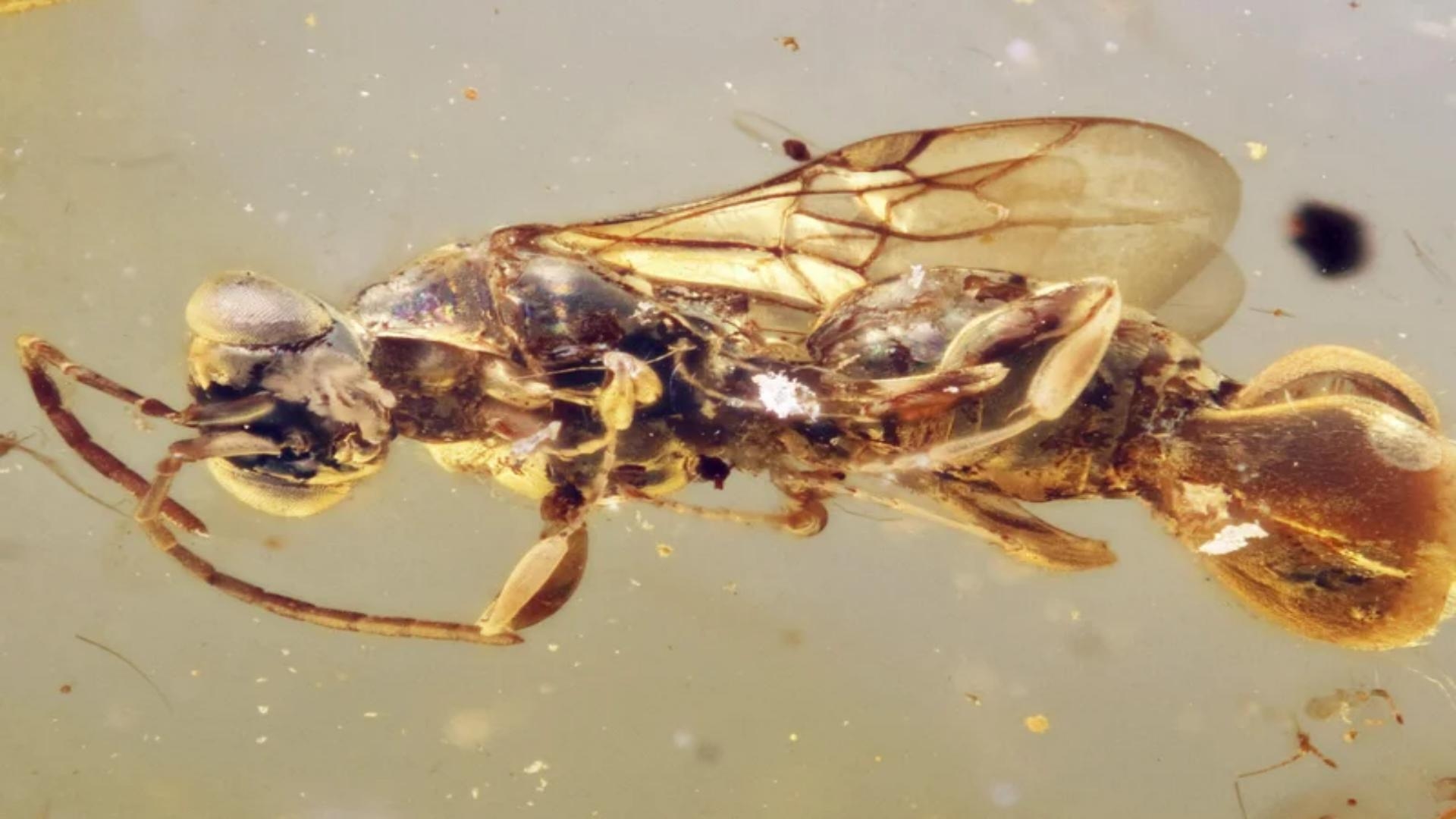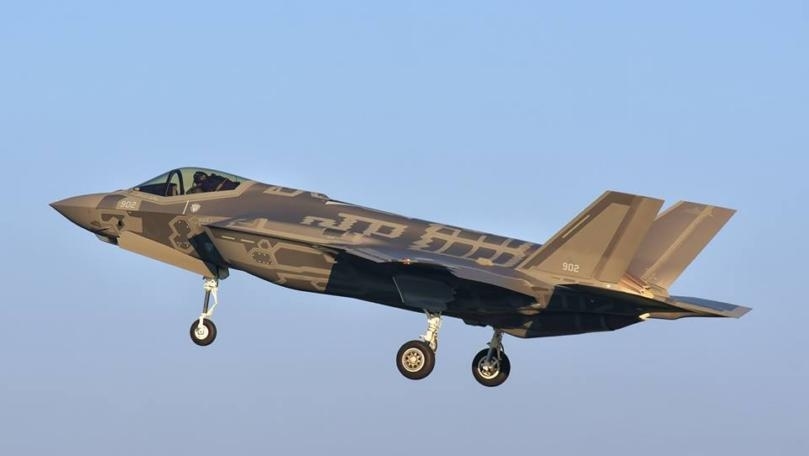indy100
We know dinosaurs were around 99 million years ago, but now new research has identified a kind of parasitic wasp that was flying around back then (and which has a strange way of catching its prey).
The species now called Sirenobethylus charybdis had a bizarre mechanism that worked like a Venus flytrap which caught the prey, and then the wasps impregnated them with their eggs, researchers noted in the journal BMC Biology.
How was this new species discovered?
Preserved in amber from the Cretaceous period, palaeontologists were able to analyse 16 specimens of the tiny wasps discovered in Myanmar.
“When I looked at the first specimen, I noticed this expansion at the tip of the abdomen, and I thought this must be an air bubble. It’s quite often you see air bubbles around specimens in amber,” said study coauthor Lars Vilhelmsen, a wasp expert and curator at the Natural History Museum of Denmark in Copenhagen.
“But then I looked at a few more specimens and then went back to the first one. This was actually part of the animal.”
Following this finding, Vilhelmsen and his colleagues from Capital Normal University in Beijing concluded from looking at how each of the wasps was preserved in different positions, the structure was movable.
"Sometimes the lower flap, as we call it, is open, and sometimes it’s closed,” Vilhelmsen said. “It was clearly a movable structure and something that was used to grasp something.”
Is this wasp comparable to any species that exist today?
Today, the closest thing that exists in nature would be the Venus flytrap - a carnivorous plant that has leaves that spring shut on insects which land on them, as per the study.
“There’s no way you can know how an insect that died 100 million years ago was living. So you look for analogs in modern insect fauna. Do we have anything among wasps or other groups that looks like this?” he said.
“And there’s no real analog within insects. We had to go all the way out of the animal kingdom into the plant kingdom to find something that remotely resembled this.”
Not what it seems
There's more to the wasp's Venus flytrap-like mechanism, and researchers reckon the insect likely did not intend to kill with it.
Rather, the wasp used the injectee as an unintentional host for its eggs and released it once it had injected the eggs.
Consequently, Vilhelmsen says the wasp's larvae started as parasites in the host body and inevitably would eat the host and noted this host would typically be a flying insect that is similar in size to Sirenobethylus charybdis.
Nowadays, living parasitoid wasp species exhibit similar (but not the exact same) behaviour as described. For instance, cuckoo wasps lay their eggs in the nest of another wasp species and once hatched, the larvae feast on their new host’s young.
Amber preservation
For palaeontologists, amber fossils provide great insight as various plants, flowers and creatures have been preserved in the tree resin from millions of years ago.
In the case of the Sirenobethylus charybdis, found in the amber that came from Myanmar’s Kachin region near the border with China, several years ago and donated it to Capital Normal University’s Key Laboratory of Insect Evolution and Environmental Changes in 2016, the study says.
However, the source of the amber has sparked ethical concerns with some palaeontologists calling for a ban on researching amber sourced from Myanmar after there was military coup in 2021.
What is a “Cretaceous weirdo”?
Sirenobethylus charybdis is one of the various insects from this time period described as a Sirenobethylus charybdis "Cretaceous weirdo".
According to Phil Barden, an associate professor at the New Jersey Institute of Technology, this means it "had adaptations that are outside of the bounds of the critters that are alive today".
“This is significant because there are around a million known insect species — even with all of that living diversity, there are still lots of unexpected surprises in the fossil record that are beyond imagination,” he added.
The species now called Sirenobethylus charybdis had a bizarre mechanism that worked like a Venus flytrap which caught the prey, and then the wasps impregnated them with their eggs, researchers noted in the journal BMC Biology.
How was this new species discovered?
Preserved in amber from the Cretaceous period, palaeontologists were able to analyse 16 specimens of the tiny wasps discovered in Myanmar.
“When I looked at the first specimen, I noticed this expansion at the tip of the abdomen, and I thought this must be an air bubble. It’s quite often you see air bubbles around specimens in amber,” said study coauthor Lars Vilhelmsen, a wasp expert and curator at the Natural History Museum of Denmark in Copenhagen.
“But then I looked at a few more specimens and then went back to the first one. This was actually part of the animal.”
Following this finding, Vilhelmsen and his colleagues from Capital Normal University in Beijing concluded from looking at how each of the wasps was preserved in different positions, the structure was movable.
"Sometimes the lower flap, as we call it, is open, and sometimes it’s closed,” Vilhelmsen said. “It was clearly a movable structure and something that was used to grasp something.”
Is this wasp comparable to any species that exist today?
Today, the closest thing that exists in nature would be the Venus flytrap - a carnivorous plant that has leaves that spring shut on insects which land on them, as per the study.
“There’s no way you can know how an insect that died 100 million years ago was living. So you look for analogs in modern insect fauna. Do we have anything among wasps or other groups that looks like this?” he said.
“And there’s no real analog within insects. We had to go all the way out of the animal kingdom into the plant kingdom to find something that remotely resembled this.”
Not what it seems
There's more to the wasp's Venus flytrap-like mechanism, and researchers reckon the insect likely did not intend to kill with it.
Rather, the wasp used the injectee as an unintentional host for its eggs and released it once it had injected the eggs.
Consequently, Vilhelmsen says the wasp's larvae started as parasites in the host body and inevitably would eat the host and noted this host would typically be a flying insect that is similar in size to Sirenobethylus charybdis.
Nowadays, living parasitoid wasp species exhibit similar (but not the exact same) behaviour as described. For instance, cuckoo wasps lay their eggs in the nest of another wasp species and once hatched, the larvae feast on their new host’s young.
Amber preservation
For palaeontologists, amber fossils provide great insight as various plants, flowers and creatures have been preserved in the tree resin from millions of years ago.
In the case of the Sirenobethylus charybdis, found in the amber that came from Myanmar’s Kachin region near the border with China, several years ago and donated it to Capital Normal University’s Key Laboratory of Insect Evolution and Environmental Changes in 2016, the study says.
However, the source of the amber has sparked ethical concerns with some palaeontologists calling for a ban on researching amber sourced from Myanmar after there was military coup in 2021.
What is a “Cretaceous weirdo”?
Sirenobethylus charybdis is one of the various insects from this time period described as a Sirenobethylus charybdis "Cretaceous weirdo".
According to Phil Barden, an associate professor at the New Jersey Institute of Technology, this means it "had adaptations that are outside of the bounds of the critters that are alive today".
“This is significant because there are around a million known insect species — even with all of that living diversity, there are still lots of unexpected surprises in the fossil record that are beyond imagination,” he added.












